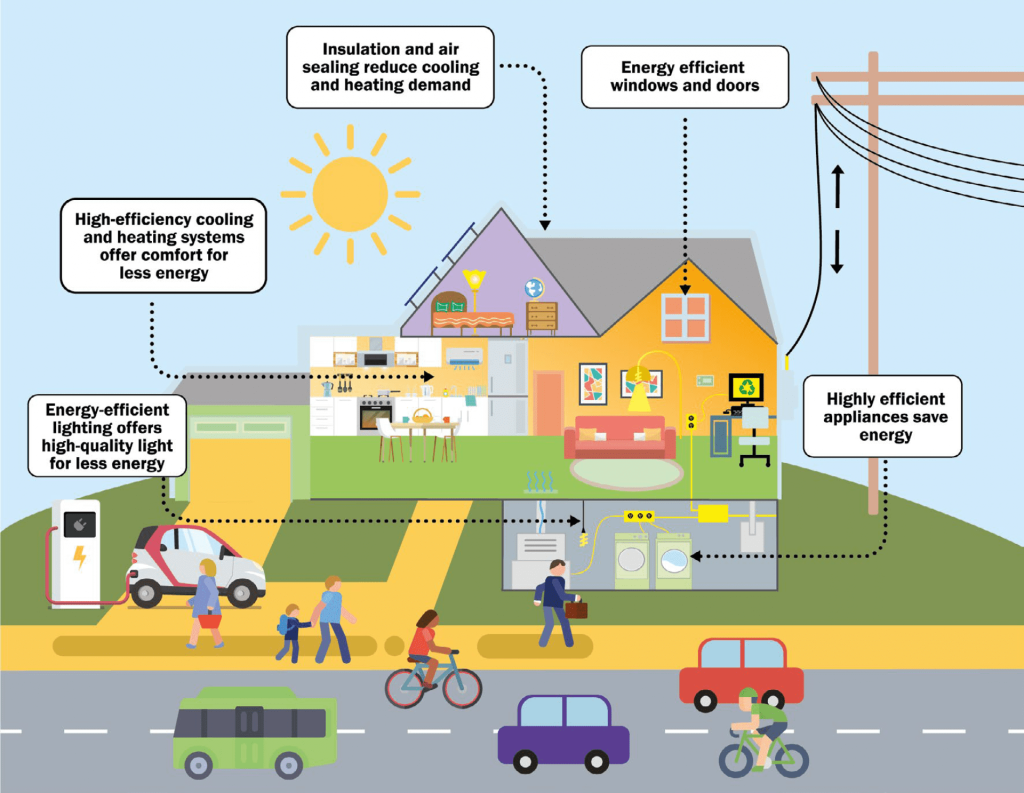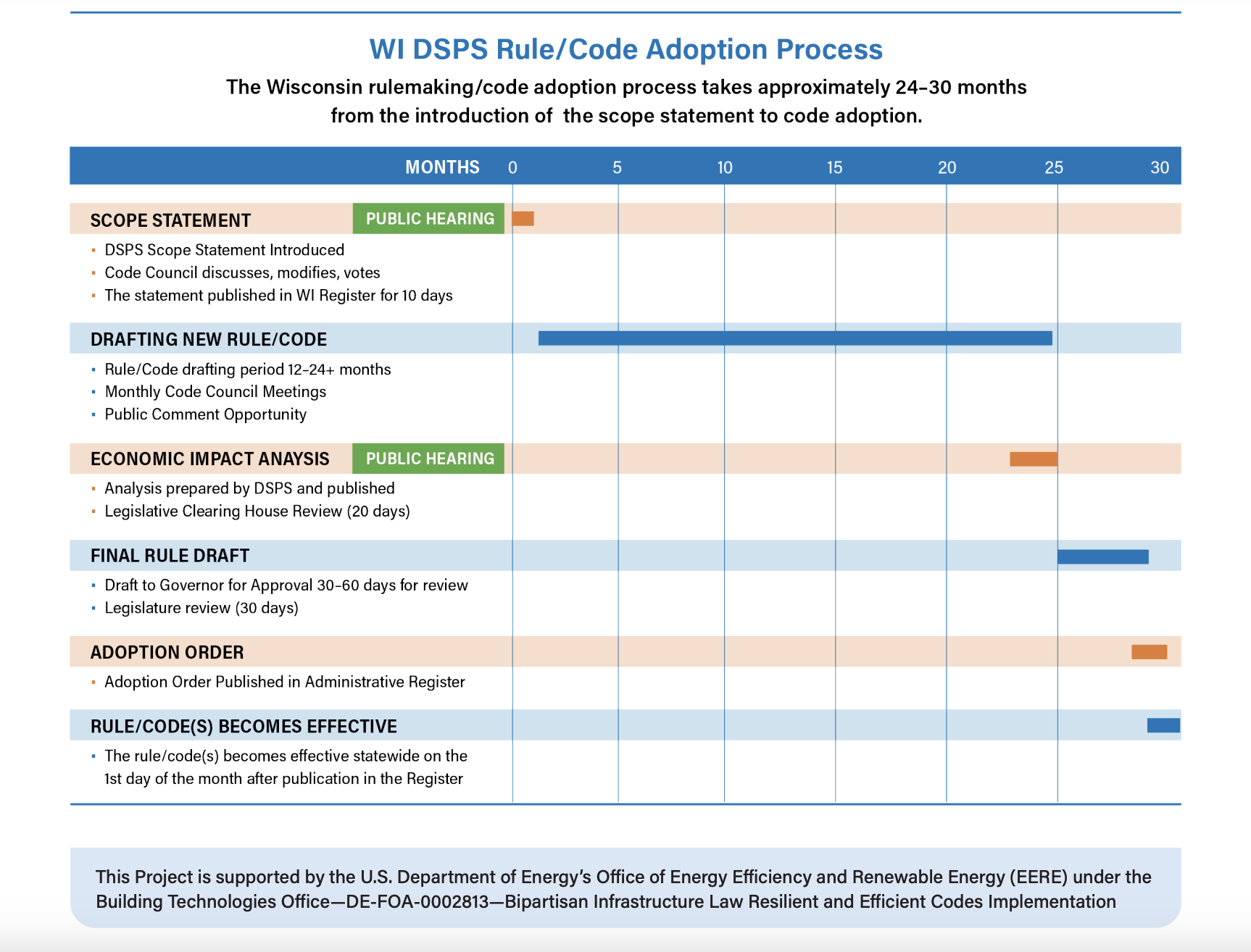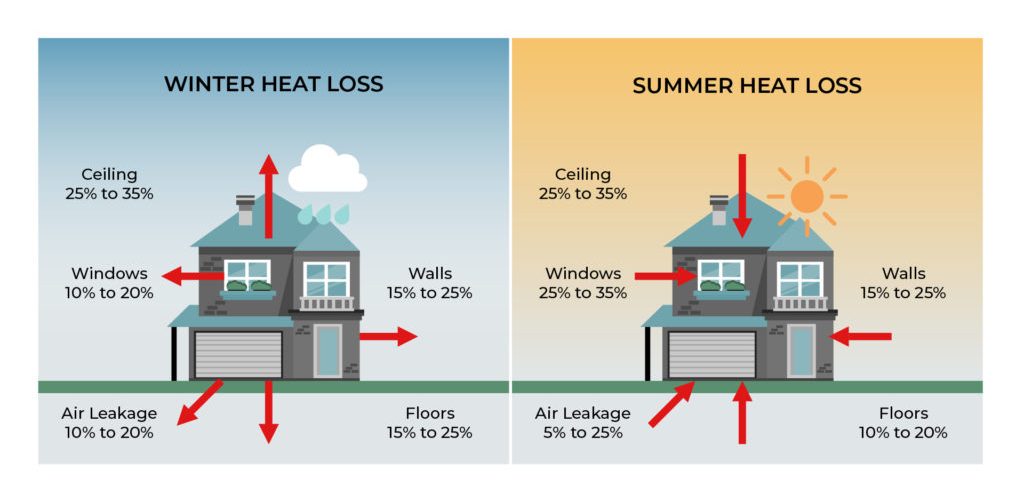What are building codes?
Building codes are standards that set the minimum requirements for a building should be designed and constructed. These codes cover structural systems, electrical systems, plumbing, and heating and cooling systems.
Building energy conservation codes govern elements of a home or building that impact total energy use and level of comfort in a building. Building codes set energy efficiency standards for homes and commercial buildings, which include requirements for the airtightness of windows and doors, the effectiveness of insulation, and the efficiency of lighting, heating and cooling systems. Wisconsin’s current standards are outdated and based on 2009 model codes for residential buildings and 2015 model codes for commercial buildings.
If we do not update our energy conservation codes, we will continue to construct buildings that waste energy and money for decades to come.

Supporting Updated Building Codes
The Uniform Dwelling Code Council is now meeting once a month to review Wisconsin’s residential code. The code update process typically takes 24-30 months to complete.

Attend Meetings
The Uniform Dwelling Code Council meets roughly monthly, usually in virtual meetings. The public is allowed to make comments during these meetings. Find the meeting schedule and link to join here.
Submit Written Comments
After the economic impact assessment of the new rule is finished, the public will be able to submit a written comment. Check back for more information.
Why new building codes matter
Building Codes impact every building built in Wisconsin by setting the minimum standard for a building to be legal. Many buildings are built down to this standard meaning they are the worst building that can be legally built. Every day, new buildings are being built that will be around for decades. It’s important for our state to hold the construction of these buildings to a high standard.

Improving Wisconsinites’ Health
Aligning Wisconsin’s building codes with current international standards is expected to collectively reduce emissions of nitrous oxide and sulfur oxide by tens of thousands of metric tons over 30 years. These pollutants are linked with heart disease, lung disease, and premature death.
Saving Money on Energy Bills
Updating Wisconsin building energy codes would reduce energy bills by an average of $651 per year for those living in buildings built to this new standard.
Reducing Carbon Emissions
55% of Wisconsin’s energy-related carbon emissions come from buildings. The Department of Energy estimates that updating Wisconsin’s residential and commercial codes would reduce CO2 emissions by almost 9 million metric tons over 30 years.
